Encyclopedia
Deportation of Armenians from Crimea
Project Erased histories is supported by the European Union under the House of Europe programme.
The Armenian population of the Crimean peninsula is among the oldest ethnic groups to have lived in the region, present there since at least the 8th century.
The first wave of Armenian migration to Crimea took place in the mid-11th century, when the peninsula was part of the Byzantine Empire. Armenians arrived from cities in the Armenian Highlands, then under Byzantine rule. During the Middle Ages, the Armenian community flourished: schools were established, churches built, and craft guilds and trading houses opened. Armenians mainly settled in the cities of Caffa (modern-day Feodosia), Solkhat, and Karasubazar (Bilohirsk). Armenian merchants were deeply involved in Black Sea trade, as documented in Genoese notarial acts. They played a key role in commerce along the Crimean coast, including in Italian trade, and were responsible for distributing goods to the North and East. Armenians also made a significant contribution to craft production in Crimea, forming a considerable proportion of the peninsula’s trading and artisan population [1].
At the end of the 15th century, Crimea was captured by the combined forces of the Crimean Tatars and the Ottoman Empire, which proved a severe trial for the Armenian community on the peninsula. The Genoese colony came to an end with the bloody conquest of Caffa in 1475 and the subsequent persecution of Christians [2]. As a result, the number of Armenian settlements in Crimea was greatly reduced. The situation changed only at the beginning of the 17th century, when a period of peaceful cultural revival began: crafts and trade were restored, ancient manuscripts were renewed, and educational institutions were established. The theological school of the Surb Khach Monastery, where prominent thinkers taught, was especially renowned [1].
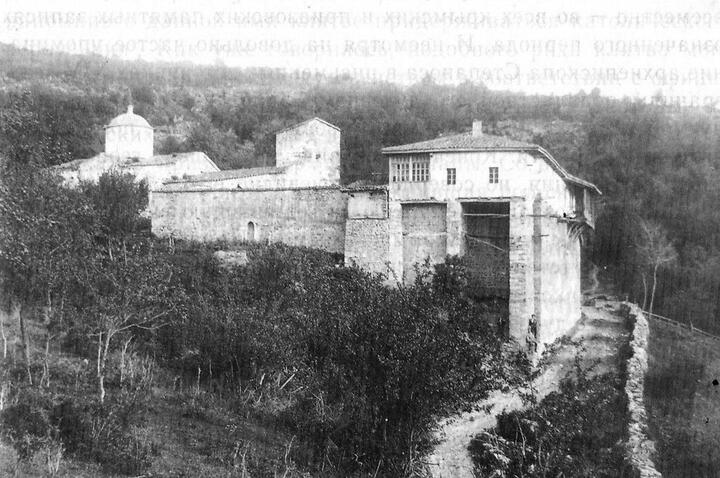
Photo. Surb Khach Monastery. 1890-1900. Photo source: Armenians of Crimea website [3]
The first deportation during the Russian Empire
In 1778, by order of Empress Catherine II, the first forced deportation of Crimean Christians to the Azov Governorate of the Russian Empire took place. A large proportion of those affected were Armenians. Officially, the resettlement was justified as a measure to protect Orthodox Christians from persecution by the Muslim Crimean Khanate. However, modern research indicates that its main aim was to weaken the Crimean Khanate’s economic and demographic strength, since Armenians and other Christian communities played a vital role in crafts, trade, and agriculture, contributing significantly to the khanate’s treasury through taxes [4].
The deportation of Crimean Christians, led by Lieutenant General Alexander Suvorov, began on 28 July 1778 and ended on 18 September the same year. According to incomplete official records, by the end of 1778 a total of 31,386 Christians had been removed from the Crimean Khanate, including 18,395 Greeks, 12,612 Armenians, 218 Georgians, and 161 Vlachs [5]. The settlers faced considerable hardship, including delays in the allocation of land for their new settlements and the harshness of local natural conditions. Nevertheless, the deportation laid the foundations for consolidating Russian influence in the empire’s southern regions. Resistance from local inhabitants further underlined the coercive nature of the resettlement.
However, over time, some Armenians returned to Crimea. For example, in 1913, about 9,000 Armenians lived in Crimea, and in 1919, about 17,000. Until 1944, there were Armenian national districts in Crimea, particularly in Feodosia.
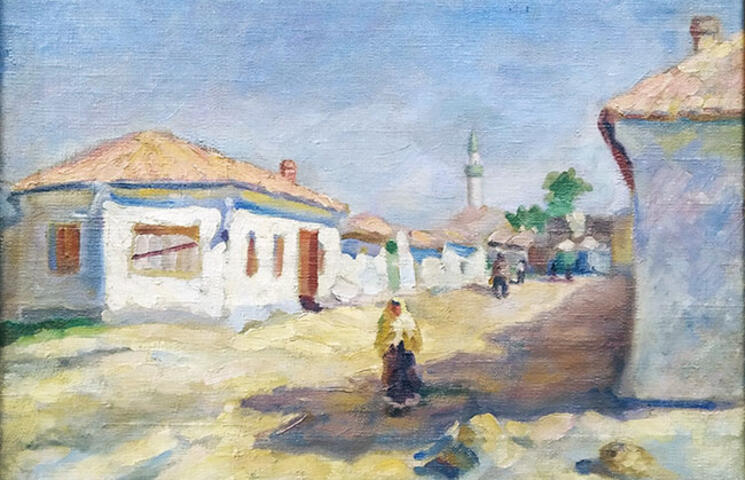
Crimean stories. Painting by Armenian-born Crimean artist Armenak Anopyan [6]
The 1944 deportation
Before the outbreak of the Second World War, more than 13,000 Armenians lived in Crimea. They were actively engaged in crafts, trade, and agriculture, and had established schools and community institutions. The 1944 deportation inflicted a severe blow on this community. Armenians carried with them many cultural treasures, manuscripts, and artefacts created in Crimea.
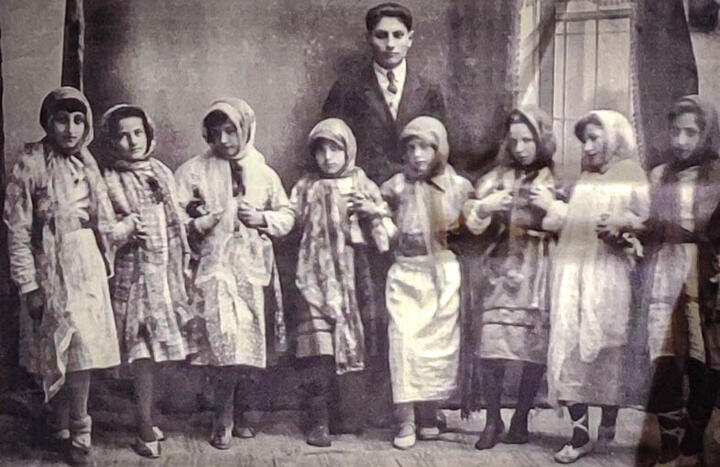
Photograph of a dance troupe from the village of Aigashan (now Abrykosove, located in the Kurman district of the Autonomous Republic of Crimea, Ukraine), with its leader Zakaryan Arsen Ovsipovich, 1940 [7]
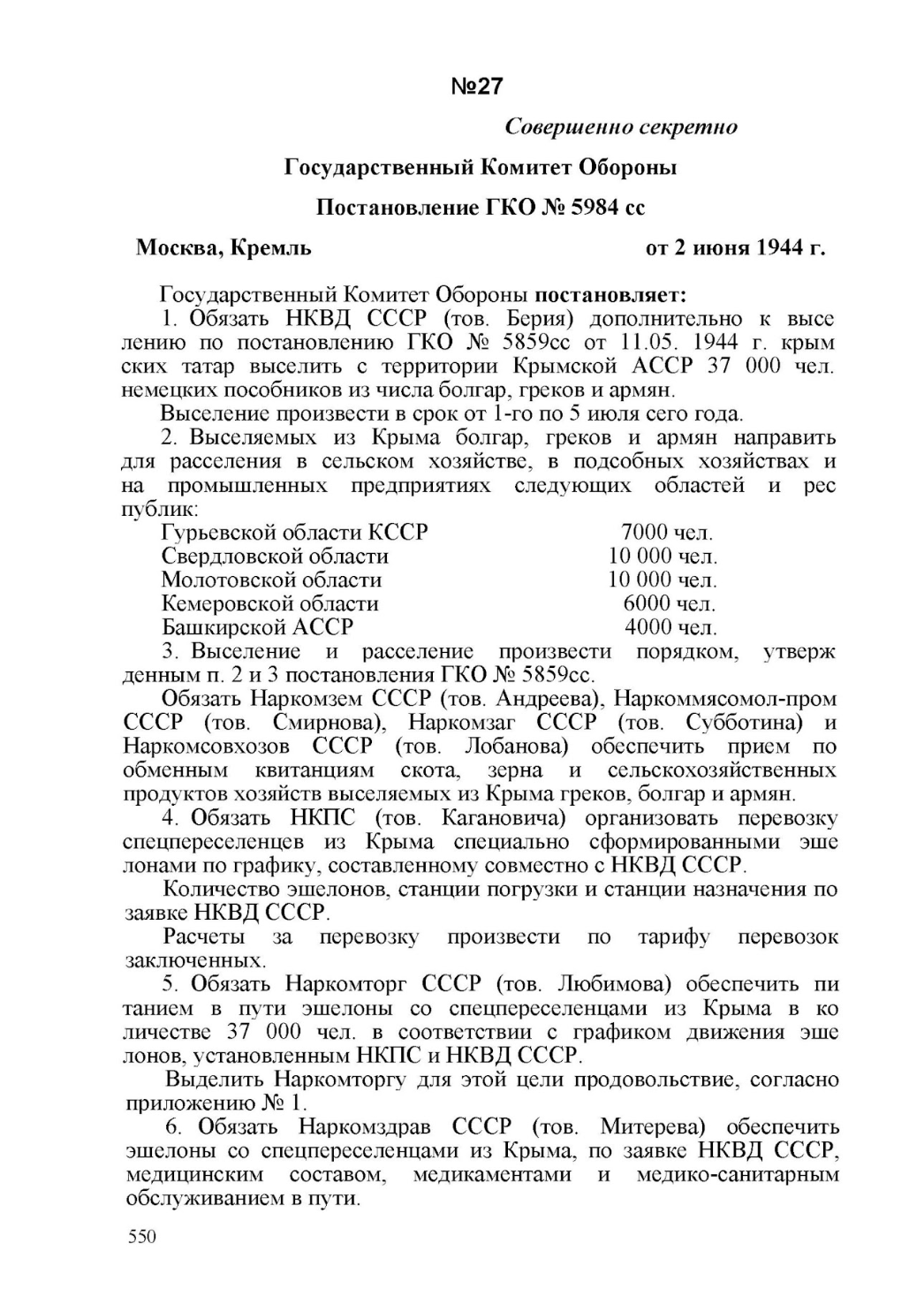
Decree of the State Defence Committee No. 5984ss of 2 June 1944 [8]
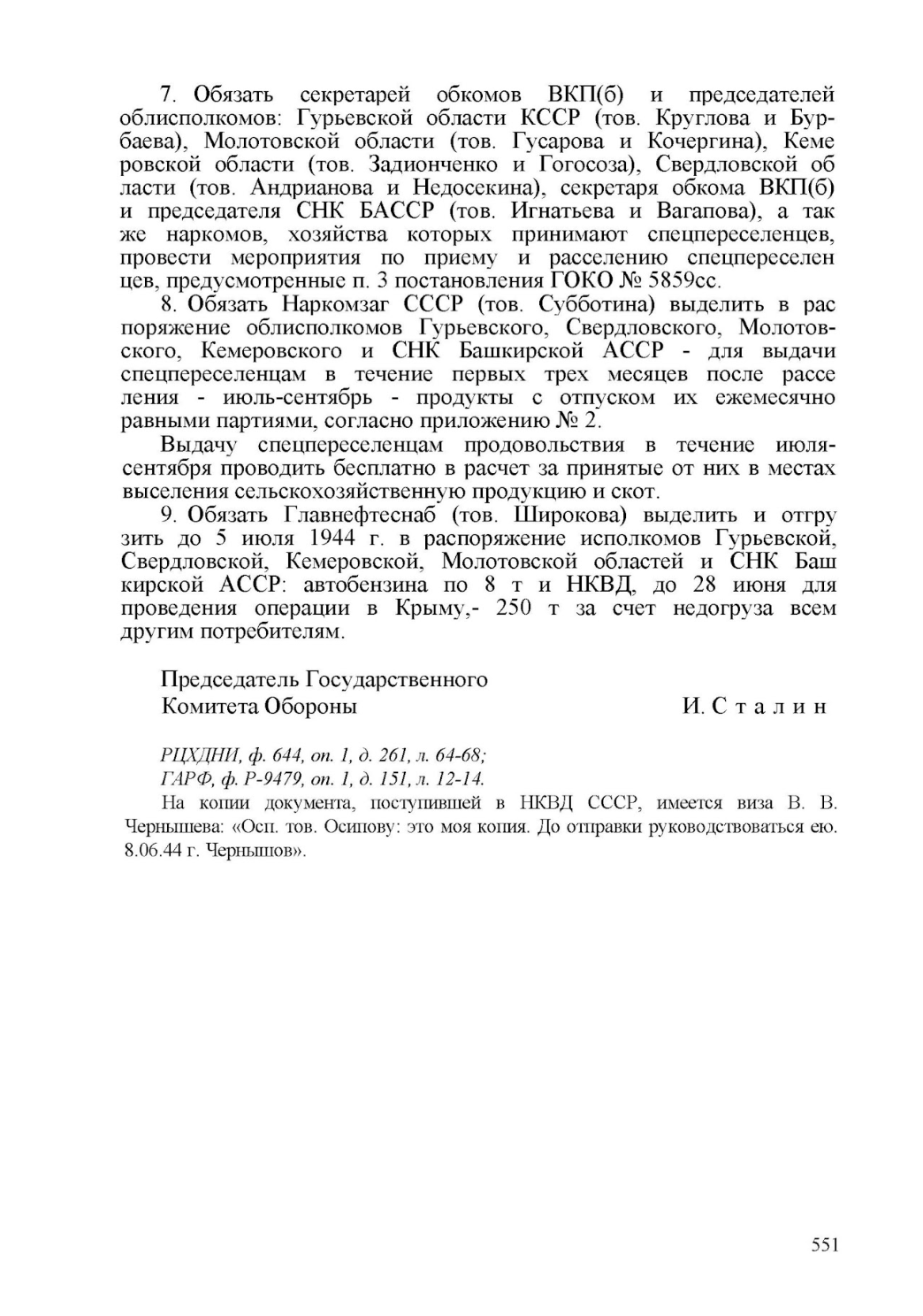
Decree of the State Defence Committee No. 5984ss of 2 June 1944 [8]
Finally, it should be noted that the conditions faced by those deported to special settlements were extremely harsh, particularly in the early years. Many were forced to live in unsuitable housing, suffered from poor nutrition and disease, and endured high mortality rates. From the time of initial resettlement until 1 October 1948, the mortality rate of the Crimean contingent (all nationalities deported from the peninsula) was 6.8 times higher than the birth rate. Between 1945 and 1950, 32,107 Crimean special settlers died, and in just two years (1951–1952) a further 2,862 perished (in 1951, by comparison, 5,007 children were born) [9]. The deportation of Crimean Armenians was part of Stalin’s repressive policy of ethnic resettlement, which removed entire peoples from the peninsula under the false pretext of collaboration with the Nazis, but in reality aimed at consolidating totalitarian control and subjugating populations through punitive and coercive measures in the Soviet Union.
Sources and literature:
- Yevgeniya Borisenko. Black Sea Armenia. URL:https://culture.voicecrimea.com.ua/en/black-sea-armenia/
- Dmytro Kopylov. The Ottoman conquest of Caffa. URL:https://www.jnsm.com.ua/h/0601T/
- Photo. Surb Khach Monastery. 1890-1900. URL:https://armk.info/catalog/kultura/chitalnyij-zal/arxivnyie-dokumentyi/s/foto-monastyir-surb-xach.html
- Crimean deportations: from Catherine II to Stalin. Ukrainian Institute of National Remembrance. URL:https://old.uinp.gov.ua/news/krimski-deportatsii-vid-ekaterini-ii-do-stalina
- Batsak N.I. RESETTLEMENT OF CHRISTIANS FROM THE CRIMEAN KHANATE TO THE NORTHERN AZOV REGION 1778–1780 [Electronic resource]. URL: http://www.history.org.ua/?termin=Pereselennya_hristiyan_nas_1778_1779
- Crimean stories. Painting by Armenian-born Crimean artist Armenak Anopyan. URL:https://armk.info/catalog/events/arxiv-kao/arxiv-2023/armenak-anopyan-kryimskie-istorii.html
- Photograph of a dance troupe from the village of Aigashan (now Abrykosove, located in the Kurman district of the Autonomous Republic of Crimea, Ukraine), with its leader Zakaryan Arsen Ovsipovich, 1940. URL:https://armk.info/catalog/kultura/chitalnyij-zal/arxivnyie-dokumentyi/ajkashen/foto-2-tanczevalnogo-kollektiva-s-ajgashen-1940g.html
- State Defence Committee. Resolution of the GKO No. 5984 ss. Moscow, Kremlin. From 2 June 1944 // RCHDNI, f. 644, op. 1, d. 261, l. 64-68; GARF, f. R-9479, op. 1, d. 151, l. 12-14. URL:https://docs.historyrussia.org/ru/nodes/165627
- Secrets and mysteries of history. Deportation of Armenians, Bulgarians, and Greeks from Crimea in 1944. URL:https://armk.info/catalog/kultura/chitalnyij-zal/zhertvyi-terrora/deportacziya-iz-kryima-armyan-bolgar-grekov-i-grazhdan-drugix-naczionalnostej.html
